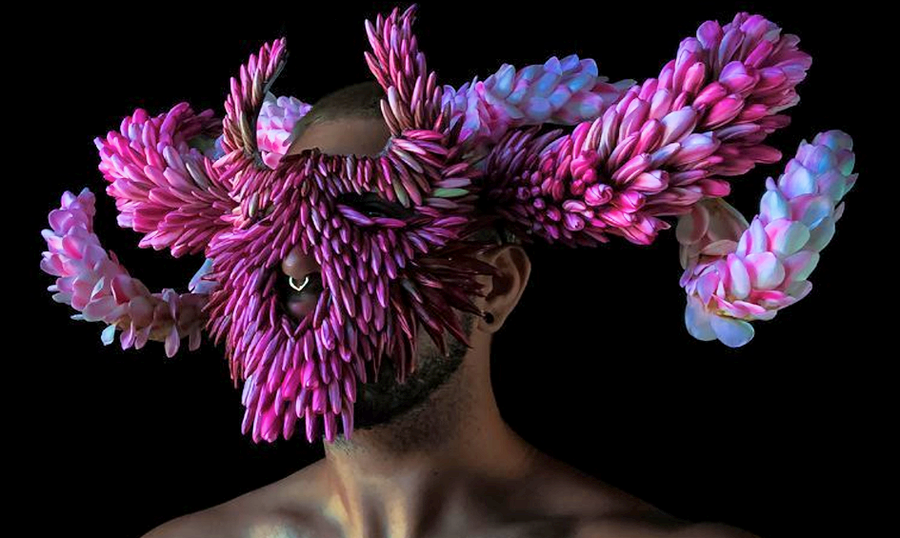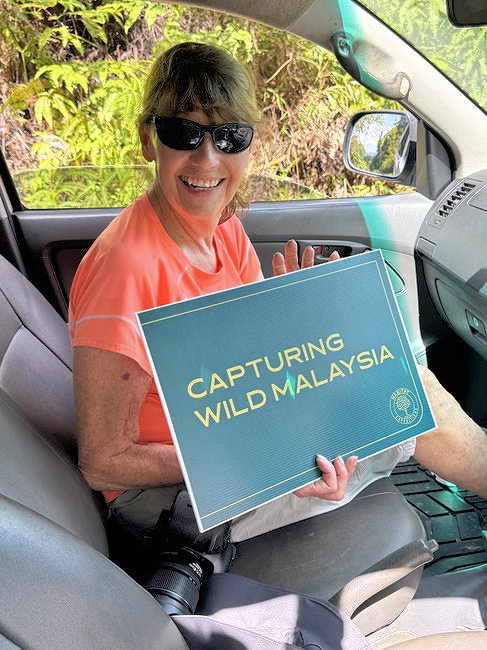IN THE 15 MINUTES BEFORE CATCHING THE BUS TO SHANGRI LA, WE RACED AROUND PARTS OF THE HONOLULU MUSEUM OF ART…A FABULOUS JEWEL BOX SURPRISE! CAN’T WAIT TO RETURN AGAIN.

Marla and I made reservations for a tour of Shangri La Museum of Islamic Art on our recent trip to Waikiki, something we have wanted to do for many years. The tours quickly sell out and also necessitate transport by a special bus from the Honolulu Museum of Art. We arrived 15 minutes early so explored a section of the museum before departing. What a beautiful surprise! The first gallery was an exhibition of the amazing works from Maui artist Noah Harders.

Noah Harders creates phantasmagoric fashion from found objects in nature. We were amazed at his creative vision. This piece was made from “Ula” or Maui spiny lobster.

Woven fantasy mask.

An amazing woven mask creation made from White King Protea.
Click on the Youtube to see more of Noah Harders’ creations.

Marla and I have a special affinity for Asian art. The museum has separate gallery spaces for Korean, Chinese, Pan-Asian Buddhism, Japanese, as well as an area for Japanese woodblock prints. We literally ran through a few of these galleries before boarding our bus! There are also galleries for Indian, Southeast Asian, Indonesian, and Islamic art.

We were very impressed with the creative display design of the museum.

This museum visitor was very happy!

Marla has a personal connection to “Guanyin.” It is a bodhisattva, a being in Buddhism who has achieved a high level of spiritual advancement and is dedicated to helping to free others from suffering. Often known as the Bodhisattva of Compassion, Guanyin is considered to perfectly embody this core Buddhist value. According to early Buddhist scriptures, Guanyin has the special ability to appear to anyone who calls upon them for aid. It has many manifestations, both female and male forms.
The Chinese Guanyin sculpture is from Northern Song dynasty (960-1127), early 11th century. The museum purchased it in 1927.

Eleven-headed Kannon sculpture. Japanese Kamakura period (1185-1333), 13th century.

We loved all the display vignettes.

The beautiful dagger on the upper left is from the Shang dynasty (ca 1500-1050 B.C.) and made of nephrite, bronze, and turquoise.

Bronze mirrors from China estimated from year 200 to 900.

Marla and I love Japanese dolls, especially from the Meiji (1868-1912) and Edo (1615-1868) period.

An Emperor and Empress doll from the Edo (1615-1868) period. The “Doll Festival” began in this period when girls and families began to collect sets of dolls on the third day of third month. This was called “Girl’s Day.” “Boys Day” was often celebrated on the fifth day of the fifth month with displays of samurai dolls and carp banners.

Three Lady polo players and a foreign groom on horseback. China, Tang dynasty 618-907.

Fascinating tomb sculptures of the mythical animal guardian. China, Tang dynasty, late 7th-early 8th century.


The museum’s “Chinese Courtyard” is beautifully peaceful.

The Honolulu Museum of Art was the vision of Anna Rice Cooke (1853-1934). This a painting of her by Charles Bartell, an artist she promoted and collected. She gave the land and an endowment to start the museum. She also gave her art collection of between 4500-6000 pieces to the museum as well. Click on the link to find out more about this a fascinating visionary and art collector: https://www.manoaheritagecenter.org/moolelo/charles-montague-anna-rice-cooke/
This is a wonderful and informative Youtube video about the museum by the curator of New York’s Frick Museum. Check it out!
Photos: Dick Gentry (Not to be used without permission) and the Honolulu Museum of Art.
About The Author
admin
Related Posts
THE TRAIN TOOK US TO WILD MALAYSIA…TO PENANG AND HISTORIC GEORGE TOWN ON PENANG ISLAND
Our Malaysian adventure continues with a stop at the Taman Negara National Park. Children from…
March 24, 2023AN AMAZING EXCURSION ON THE BELMOND EASTERN & ORIENT EXPRESS THROUGH THE JUNGLES OF MALAYSIA
Having a 3-night Belmond train excursion as a component of our AHI “Treasures…
March 24, 2023

Leave A Comment